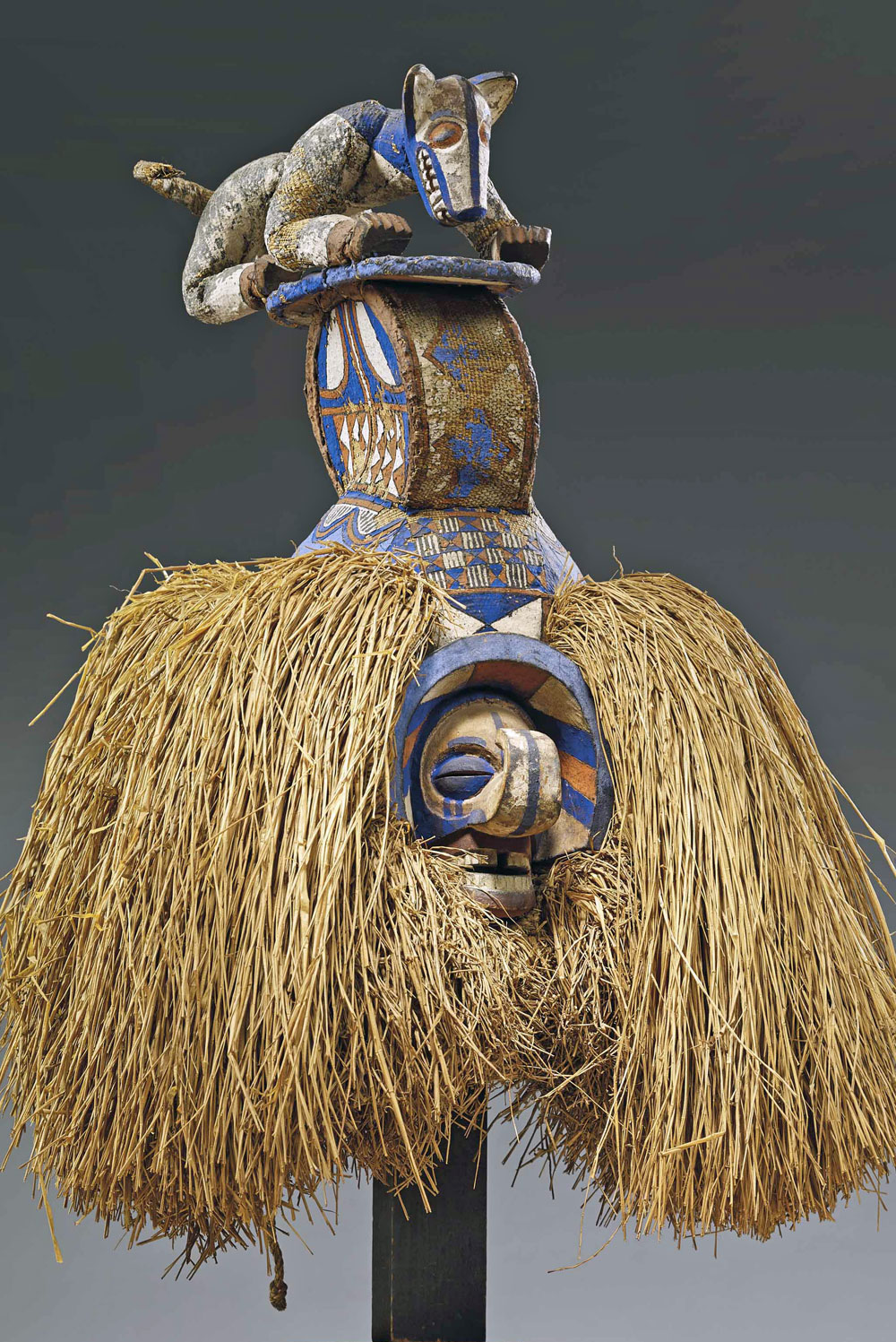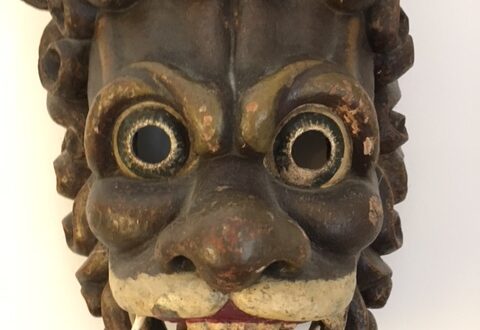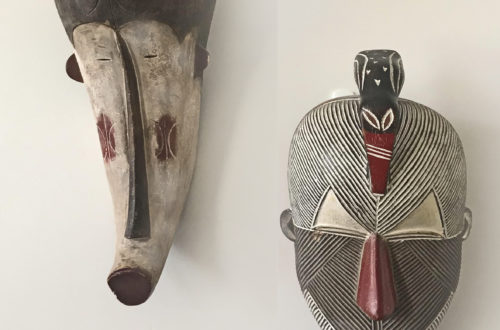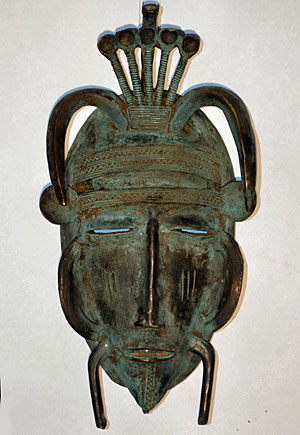 Dr. Arthur P. Bourgeois says: “Among the Nkanu, the initiation of young men to manhood is called Nzo Longo. Within this context, Kisokolo masks are distinguished by the two horns of the coiffure and sometimes an upturned nose. Representing a dancing chief with the reputation of a notorious womanizer, the mask dances with another called Makemba, a sorrowful feminine masquerade figure. The upturned nose of Kisokolo may have had a functional role, as initiates at the closing of nzo longo had to eat a piece of manioc bread and goat’s meat from the nose of the mask. Moreover, the full name of the mask is “Kisokolo kudidi mbumba” (“Kisokolo who ate the injunction”). But like the Yaka ndeemba mask, it also references both an elephant’s trunk as well as a serves as a phallic symbol. In performance, Nkoso masker adorned only with feathers precedes the pair and is followed by pairs of animal masks. Lastly a Kakungu masker appears with his gigantic mask and then finally the Mbala dancer. Mbala is known for its obscenities and brandishing a cylindrical piece of wood or manioc root representing an erect penis and thrusting his hips in the direction of the woman present. Some of the women respond by assuming sensuous postures. The masked dancers each wear a dancing skirt made of antelope hide, a buffalo hide belt, and a gray monkey hide attached to the front of the skirt. Following the official ‘coming-out’ they obtain their dancing costumes, masks, and drums from the initiation camp enclosure and tour the neighboring hamlets and communities to provide entertainment and announce their new status as initiated young men. The circular raised edge of the Kisokolo mask is distinctive of masks deriving from the southeastern Nkanu region and northern Angola. This is possibly in modest imitation of the balloon-like or bulging headdress of masks from the western Nkanu region that are much larger.”
Dr. Arthur P. Bourgeois says: “Among the Nkanu, the initiation of young men to manhood is called Nzo Longo. Within this context, Kisokolo masks are distinguished by the two horns of the coiffure and sometimes an upturned nose. Representing a dancing chief with the reputation of a notorious womanizer, the mask dances with another called Makemba, a sorrowful feminine masquerade figure. The upturned nose of Kisokolo may have had a functional role, as initiates at the closing of nzo longo had to eat a piece of manioc bread and goat’s meat from the nose of the mask. Moreover, the full name of the mask is “Kisokolo kudidi mbumba” (“Kisokolo who ate the injunction”). But like the Yaka ndeemba mask, it also references both an elephant’s trunk as well as a serves as a phallic symbol. In performance, Nkoso masker adorned only with feathers precedes the pair and is followed by pairs of animal masks. Lastly a Kakungu masker appears with his gigantic mask and then finally the Mbala dancer. Mbala is known for its obscenities and brandishing a cylindrical piece of wood or manioc root representing an erect penis and thrusting his hips in the direction of the woman present. Some of the women respond by assuming sensuous postures. The masked dancers each wear a dancing skirt made of antelope hide, a buffalo hide belt, and a gray monkey hide attached to the front of the skirt. Following the official ‘coming-out’ they obtain their dancing costumes, masks, and drums from the initiation camp enclosure and tour the neighboring hamlets and communities to provide entertainment and announce their new status as initiated young men. The circular raised edge of the Kisokolo mask is distinctive of masks deriving from the southeastern Nkanu region and northern Angola. This is possibly in modest imitation of the balloon-like or bulging headdress of masks from the western Nkanu region that are much larger.”





